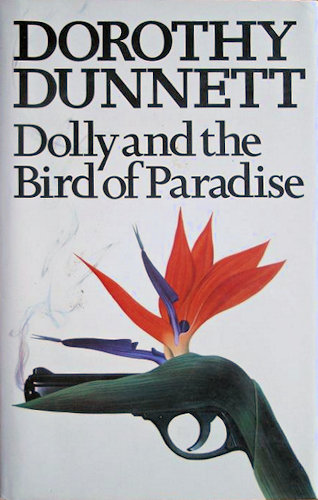Now I was what I had always resisted being in private life: part of a team. For a moment, on board the Princess, I had thought the team had gone, and I might be on my own. And instead of feeling free, I'd felt the opposite. [p. 261]
For a description of the underlying scenario of the 'Dolly' series, see my review of Dolly and the Nanny Bird. This is the second of the two hardcovers gifted to me last Easter: like the other novels in the series, I've read and reread it before, but not for a couple of decades.
In Dolly and the Bird of Paradise (first published 1983: republished as Tropical Issue), the narrator is Rita Geddes, a successful makeup artist working in the film industry, who is four foot eleven inches tall and whose personal look includes brightly-coloured Mohawks and makeup in the style of Adam Ant. She is also dyslexic. And she doesn't suffer fools lightly.
Though this was published rather late in the series, it's possibly the earliest in terms of chronology: Johnson has just survived the plane crash ('plane crash') that killed his wife. Rita ends up walking his dog, sailing on his yacht the Dolly, and involved in a murder case and an international drug-smuggling operation.
I think Rita might be one of my favourite of the Dolly heroines: she is thoroughly competent, self-possessed and witty. And this time around, I started to wonder if Dunnett deliberately wrote Rita as queer. There are a lot of 'teasing' comments, from people who know Rita well, about lesbians, beautiful women et cetera. And she shows no interest in anything more than a kiss from any man, even from her old friend Ferdy 'who would take no for an answer, after a struggle'. (See under 'period-typical sexism'.) Her sexuality's irrelevant to the plot, of course: but I like to think that this was Dunnett's attempt at depicting a positive, likeable queer female character.

No comments:
Post a Comment